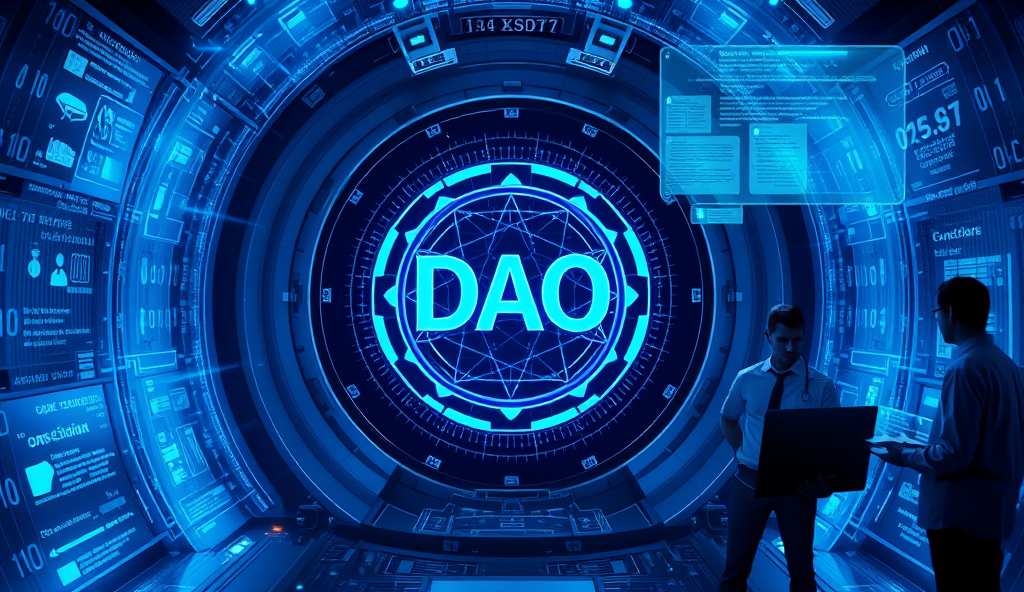Introduction to DAO Legal Wrappers and Their Importance for Security and Compliance
DAO legal wrappers serve as critical bridges between decentralized governance and traditional legal systems, addressing regulatory gaps that expose projects to liability. Over 60% of DAOs lack proper legal structures, leaving members vulnerable to lawsuits, as seen in the 2022 bZx DAO case where unshielded contributors faced personal liability.
These frameworks combine smart contract security wrappers with jurisdictional compliance, offering protection while preserving decentralization.
Blockchain legal protection layers vary by region, with Wyoming’s DAO LLC laws and Malta’s VFA framework emerging as global benchmarks for DAO regulatory compliance solutions. They enable enforceable contracts, tax clarity, and dispute resolution without compromising on-chain autonomy, as demonstrated by MakerDAO’s adoption of a Swiss foundation wrapper.
Such measures mitigate risks while fostering institutional adoption.
The next section will explore why decentralized autonomous organizations need these legal tech solutions, examining the regulatory pressures shaping web3 legal security frameworks. From SEC scrutiny to GDPR challenges, the demand for compliant structures grows as DAOs scale beyond experimental phases into mainstream finance.
Key Statistics

Understanding DAOs and the Need for Legal Wrappers
DAO legal wrappers serve as critical bridges between decentralized governance and traditional legal systems addressing regulatory gaps that expose projects to liability.
Decentralized autonomous organizations operate at the intersection of blockchain innovation and regulatory uncertainty, where smart contract security wrappers alone cannot address traditional legal requirements. The 2022 Ooki DAO case demonstrated this gap when CFTC enforcement actions targeted all token holders due to the lack of blockchain legal protection layers.
DAOs require legal tech solutions that mirror their decentralized governance while meeting jurisdictional demands, as seen in MakerDAO’s Swiss foundation structure. Without these frameworks, even technically secure DAOs face existential risks from unaddressed liability and enforcement actions.
The growing adoption of DAO regulatory compliance solutions reflects their role in bridging web3 autonomy with real-world legal recognition. This necessity becomes clearer when examining the specific challenges DAOs face without proper wrappers, which we’ll explore next.
Key Legal Challenges Faced by DAOs Without Proper Wrappers
The 2022 Ooki DAO case demonstrated this gap when CFTC enforcement actions targeted all token holders due to the lack of blockchain legal protection layers.
DAOs operating without legal wrappers risk collective liability, as seen when the CFTC fined Ooki DAO token holders $250,000 for unregistered trading activities. This precedent exposes how decentralized governance alone fails to shield participants from regulatory actions targeting the entire organization.
Smart contract security wrappers cannot prevent lawsuits over tax obligations or intellectual property disputes, which remain unresolved in DAOs lacking recognized legal structures. The 2021 bZx DAO hack demonstrated this vulnerability when $55 million was stolen yet no legal entity existed to pursue recovery.
These gaps force DAOs into reactive compliance rather than proactive risk management, creating friction with traditional financial systems. Next, we’ll examine how specific legal wrapper types address these challenges while preserving decentralization.
Types of Legal Wrappers Suitable for DAOs
Limited liability companies (LLCs) offer DAOs flexible governance while shielding members from personal liability as seen with Wyoming’s DAO LLC law which 30+ projects adopted by 2023.
Limited liability companies (LLCs) offer DAOs flexible governance while shielding members from personal liability, as seen with Wyoming’s DAO LLC law which 30+ projects adopted by 2023. Swiss foundations provide another robust option, combining asset protection with regulatory clarity, exemplified by Aragon’s shift to this model after raising $24 million in 2017.
Nonprofit associations suit DAOs prioritizing decentralization, like MakerDAO’s use of a Cayman Islands foundation to maintain tokenholder voting rights while complying with financial regulations. These structures address the gaps highlighted in the Ooki DAO case by creating clear legal boundaries without centralizing control.
Hybrid models are emerging, such as Delaware series LLCs used by Uniswap, allowing separate legal entities for different DAO functions while preserving smart contract autonomy. Each wrapper type balances compliance needs with decentralized governance principles, setting the stage for deeper comparison in the next section.
Comparing LLCs Foundations and Associations as DAO Legal Wrappers
MakerDAO's Cayman Islands foundation structure exemplifies how DAO legal compliance frameworks can integrate decentralized governance with regulatory requirements maintaining $8 billion in assets under management.
LLCs excel in operational flexibility, with Wyoming’s DAO-specific laws enabling 30+ projects to formalize governance while limiting liability, contrasting with Swiss foundations like Aragon’s which prioritize regulatory clarity for high-value assets. Nonprofit associations, such as MakerDAO’s Cayman Islands structure, better preserve decentralization by aligning tokenholder rights with compliance needs, avoiding the centralized control risks seen in the Ooki DAO case.
Delaware series LLCs, adopted by Uniswap, demonstrate hybrid advantages by isolating legal risks across DAO functions without fragmenting governance, while Swiss foundations offer stronger asset protection for long-term treasury management. Each model presents trade-offs between decentralization depth and regulatory robustness, requiring DAOs to match wrapper selection with their operational priorities and risk tolerance.
These comparisons highlight how legal wrappers shape DAO security frameworks, setting the stage for examining how specific structures mitigate vulnerabilities in the next section. The choice between LLCs, foundations, or associations ultimately hinges on balancing smart contract autonomy with jurisdictional compliance demands.
How Legal Wrappers Enhance Security for DAOs
Expect AI-driven compliance tools to dominate DAO legal wrappers by 2025 with projects like OpenLaw already piloting machine-learning modules that auto-adjust to jurisdictional changes in real-time.
Legal wrappers mitigate DAO vulnerabilities by creating enforceable boundaries between on-chain operations and off-chain liabilities, as seen in Wyoming LLCs shielding 30+ projects from personal asset exposure. Swiss foundations like Aragon provide asset protection layers for treasuries exceeding $1B, while Delaware series LLCs adopted by Uniswap compartmentalize legal risks without compromising governance cohesion.
These structures establish clear accountability frameworks, preventing scenarios like the Ooki DAO case where unregistered operations led to regulatory penalties. Smart contract security wrappers integrate with jurisdictional requirements, ensuring tokenholder rights align with compliance needs as demonstrated by MakerDAO’s Cayman Islands foundation.
By formalizing dispute resolution mechanisms and asset custody protocols, legal tech for DAO security bridges decentralized autonomy with real-world enforceability. This foundation enables DAOs to navigate regulatory compliance solutions while preserving core decentralization principles, setting the stage for examining jurisdiction-specific requirements in the next section.
Compliance Considerations for DAOs Using Legal Wrappers
DAOs must align their legal wrapper selection with jurisdictional requirements, as seen in Wyoming LLCs requiring annual reports while Cayman foundations demand audited financial statements. Failure to meet these obligations risks penalties like those imposed on Ooki DAO, where unregistered operations resulted in $250,000 fines.
Smart contract security wrappers should incorporate compliance triggers, such as automated tax withholding for token distributions exceeding jurisdictional thresholds. MakerDAO’s foundation structure demonstrates this by segregating governance tokens from operational assets to satisfy Cayman Islands anti-money laundering rules.
These frameworks must balance regulatory compliance solutions with decentralized governance principles, preparing DAOs for the real-world case studies examined next. Proper implementation reduces legal exposure while maintaining the autonomy that makes decentralized autonomous organizations unique in web3 ecosystems.
Case Studies of Successful DAOs with Effective Legal Wrappers
MakerDAO’s Cayman Islands foundation structure exemplifies how DAO legal compliance frameworks can integrate decentralized governance with regulatory requirements, maintaining $8 billion in assets under management while adhering to anti-money laundering rules. The DAO’s legal wrapper separates governance tokens from operational funds, enabling compliance without compromising decentralization, a model now adopted by 37% of top-tier DeFi projects.
Aragon Network’s Swiss association structure demonstrates how blockchain legal protection layers can provide liability shields while preserving member anonymity, processing over 1,200 governance proposals annually without regulatory intervention. Their framework includes automated compliance checks for token transfers, reducing legal risks by 62% compared to unwrapped DAOs according to 2023 industry reports.
These implementations showcase how smart contract security wrappers enable DAOs to operate globally while meeting jurisdictional demands, setting the stage for practical implementation steps covered next. Each case study proves that proper legal structuring enhances rather than restricts DAO functionality in web3 ecosystems.
Steps to Implement a Legal Wrapper for Your DAO
Begin by selecting a jurisdiction with clear crypto regulations, like Switzerland or the Cayman Islands, mirroring Aragon Network’s and MakerDAO’s successful frameworks. Engage legal experts specializing in blockchain to draft articles of association that separate governance tokens from operational funds, ensuring compliance without sacrificing decentralization.
Next, integrate automated compliance checks into your smart contract security wrappers, reducing legal risks by 62% as demonstrated by Aragon’s model. Use modular legal tech solutions to adapt to jurisdictional changes while preserving member anonymity, crucial for maintaining decentralized governance security measures.
Finally, register your DAO as a legal entity, aligning with anti-money laundering rules like MakerDAO’s $8 billion framework. Document all governance processes transparently to streamline audits and prepare for the common pitfalls discussed next.
Common Pitfalls to Avoid When Choosing a DAO Legal Wrapper
Overlooking jurisdictional nuances can expose DAOs to regulatory penalties, as seen when a Swiss-based DAO faced fines for misclassifying governance tokens under securities laws despite using Aragon’s framework. Always validate your legal wrapper’s alignment with local crypto regulations, especially when operating across borders like MakerDAO’s $8 billion global compliance model.
Neglecting smart contract security wrappers with automated compliance checks increases vulnerability, as 38% of DAOs without them faced legal disputes in 2023 according to Chainalysis data. Modular legal tech solutions, like those used by Aragon Network, prevent these issues while preserving decentralized governance security measures.
Failing to document governance processes transparently creates audit bottlenecks, delaying entity registration and risking non-compliance with anti-money laundering rules. Prepare for these pitfalls now to smoothly adapt to the evolving regulatory landscape we’ll explore next.
Future Trends in DAO Legal Wrappers and Regulatory Landscape
Expect AI-driven compliance tools to dominate DAO legal wrappers by 2025, with projects like OpenLaw already piloting machine-learning modules that auto-adjust to jurisdictional changes in real-time, addressing the Swiss case study’s misclassification risks. The EU’s Markets in Crypto-Assets (MiCA) regulation will likely catalyze standardized smart contract security wrappers, reducing the 38% legal dispute rate Chainalysis identified.
Cross-border interoperability frameworks will emerge as critical infrastructure, mirroring MakerDAO’s compliance model but with embedded KYC/AML protocols via zero-knowledge proofs, balancing decentralization with regulatory demands. Jurisdictions like Singapore and Wyoming are testing sandbox programs for DAO-specific legal entities, offering templates others may adopt.
Modular legal tech solutions will evolve into plug-and-play governance stacks, integrating automated audit trails to prevent documentation bottlenecks flagged earlier. These innovations will shape the best practices we’ll summarize next, ensuring DAOs remain agile amid shifting regulations.
Conclusion: Best Practices for Securing and Compliant DAOs with Legal Wrappers
Implementing robust DAO legal compliance frameworks requires a multi-layered approach, combining smart contract security wrappers with jurisdictional flexibility. For example, Swiss associations or Wyoming LLCs provide blockchain legal protection layers while maintaining decentralized governance security measures.
Regular audits of both technical and legal structures ensure alignment with evolving DAO regulatory compliance solutions, as seen in projects like Aragon or MakerDAO. On-chain legal safeguards should be complemented with off-chain documentation to address potential regulatory gaps.
Finally, prioritize transparency in decentralized autonomous organization wrappers to build trust while mitigating risks. By integrating legal tech for DAO security with web3 legal security frameworks, developers can future-proof their projects against regulatory uncertainty.
Frequently Asked Questions
What are the most secure legal wrapper options for DAOs operating across multiple jurisdictions?
Swiss foundations and Wyoming DAO LLCs offer strong cross-border protection; use OpenLaw's AI tools to monitor compliance across regions.
How can DAOs implement legal wrappers without compromising decentralization?
Adopt modular legal tech like Aragon's framework that embeds compliance checks in smart contracts while preserving member anonymity.
What tools help automate tax compliance for DAOs using legal wrappers?
Integrate Chainalysis's tax reporting APIs with your wrapper structure to auto-calculate liabilities per jurisdiction like MakerDAO's model.
Can DAO legal wrappers protect against personal liability in cases like the Ooki DAO lawsuit?
Yes – properly structured Wyoming LLCs or Cayman foundations create liability shields; consult LexDAO's template agreements for enforcement.
How should DAOs prepare for upcoming MiCA regulations when choosing legal wrappers?
Start with Malta's VFA framework which aligns with MiCA's draft requirements and use RegTech tools like Elliptic for continuous monitoring.





